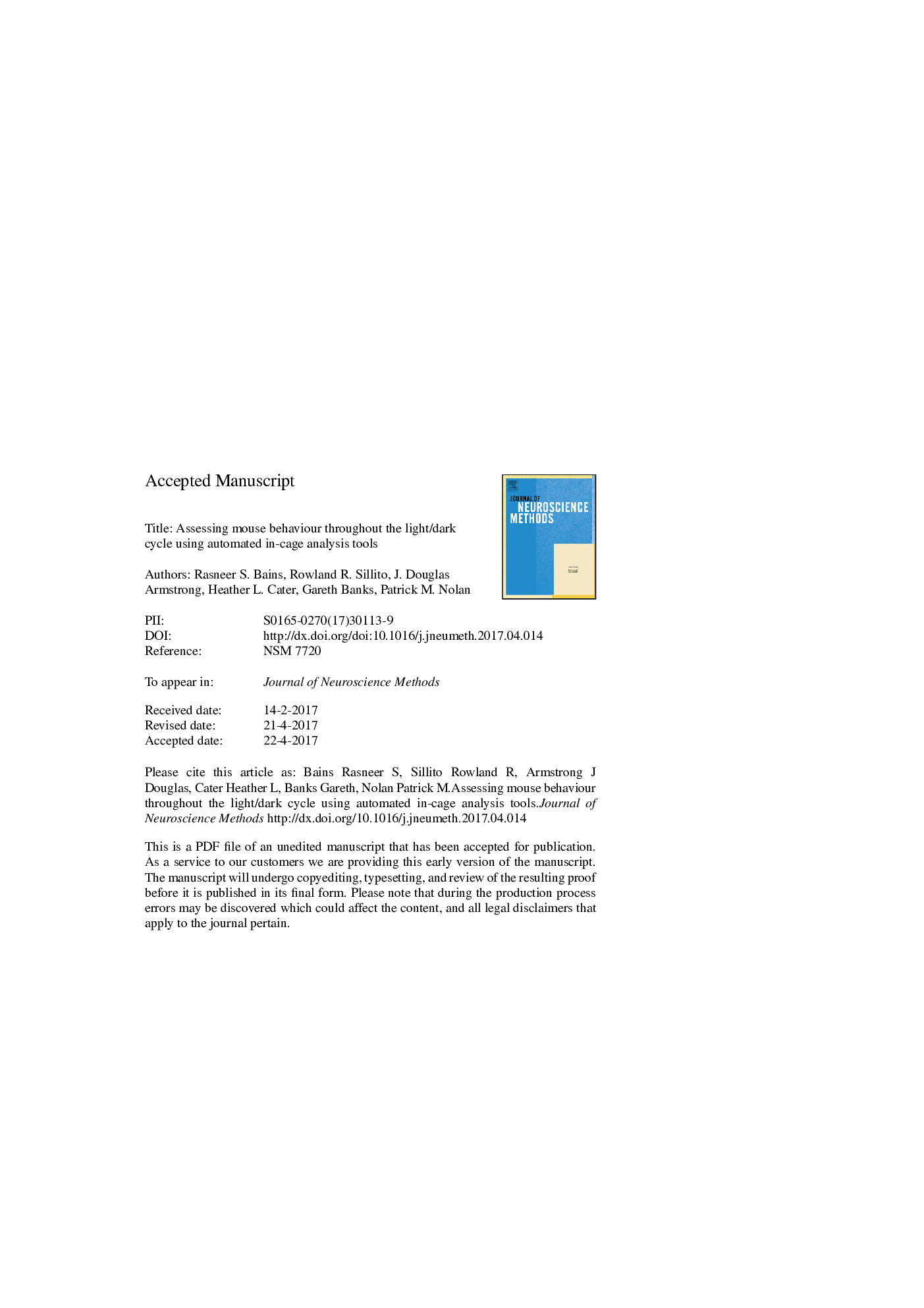| Article ID | Journal | Published Year | Pages | File Type |
|---|---|---|---|---|
| 8840377 | Journal of Neuroscience Methods | 2018 | 34 Pages |
Abstract
An important factor in reducing variability in mouse test outcomes has been to develop assays that can be used for continuous automated home cage assessment. Our experience has shown that this has been most evidenced in long-term assessment of wheel-running activity in mice. Historically, wheel-running in mice and other rodents have been used as a robust assay to determine, with precision, the inherent period of circadian rhythms in mice. Furthermore, this assay has been instrumental in dissecting the molecular genetic basis of mammalian circadian rhythms. In teasing out the elements of this test that have determined its robustness - automated assessment of an unforced behaviour in the home cage over long time intervals - we and others have been investigating whether similar test apparatus could be used to accurately discriminate differences in distinct behavioural parameters in mice. Firstly, using these systems, we explored behaviours in a number of mouse inbred strains to determine whether we could extract biologically meaningful differences. Secondly, we tested a number of relevant mutant lines to determine how discriminative these parameters were. Our findings show that, when compared to conventional out-of-cage phenotyping, a far deeper understanding of mouse mutant phenotype can be established by monitoring behaviour in the home cage over one or more light:dark cycles.
Related Topics
Life Sciences
Neuroscience
Neuroscience (General)
Authors
Rasneer S. Bains, Sara Wells, Rowland R. Sillito, J. Douglas Armstrong, Heather L. Cater, Gareth Banks, Patrick M. Nolan,
